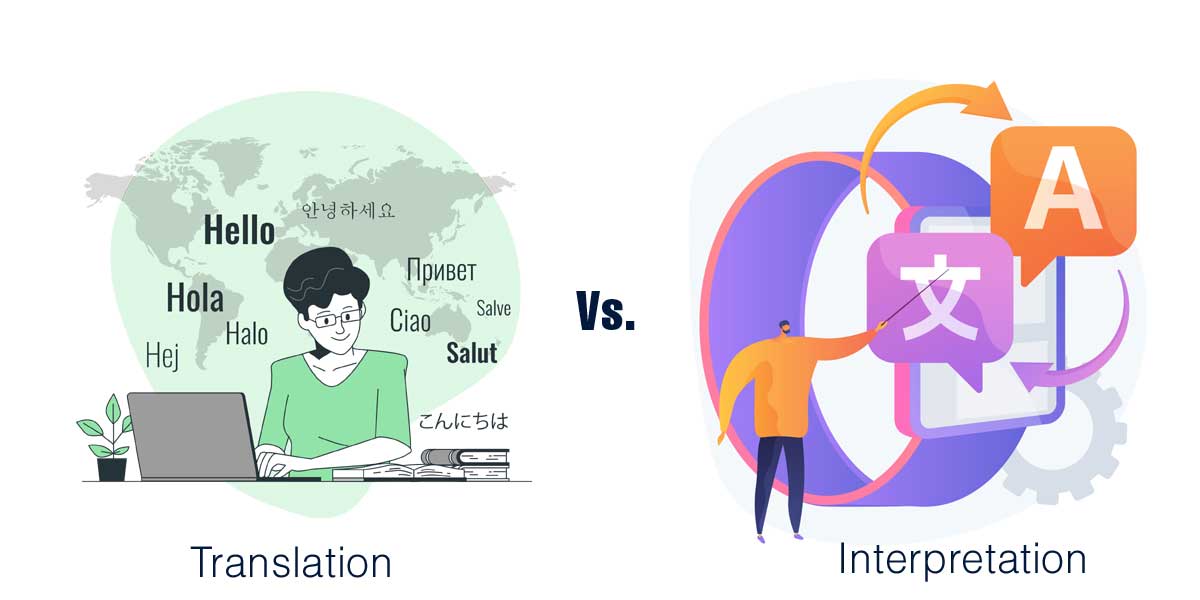Translation and Interpretation: Their Differences

To facilitate communication across cultures and languages, interpretation and translating are required. To successfully communicate in a world wherein communication is crucial, interpreters and translators are required, the experts of the translation services company in Mumbai, suggests.
Although they share some characteristics, interpreting and translating need different skill sets. While translators deal with written information, interpreters mediate languages audibly. Translators must possess strong reading comprehension, transference, and target language-producing abilities in terms of linguistics. In order to render material more rapidly and with limited access to outside resources, interpreters must maximize their working memory.
The distinction between interpretation and translation is frequently erroneous. What actually distinguishes the two, then? We must assess a few crucial factors in order to contrast translation and interpretation directly.
The main distinction between interpretation and translation would be that the former works with spoken language in the present while the latter concentrates on written text. Another distinction between translation and interpretation is that the former occurs over time with significant access to outside resources, whilst the latter takes place immediately within a live scenario.
Interpretation
More emphasis is placed on paraphrasing the message that the speaker is attempting to get through during interpretation. Meetings, conferences, appointments, and other live conversations may all be translated by an interpreter, who repeats the material in a foreign language.
Translation
When one works in the translation industry, they attempt to properly translate written information from one language—the source language—into another. The fact that translators frequently employ a greater variety of browser tools when working is one of the most significant distinctions between translation and interpretation.
Software that helps translation and rapidly fills in the blanks can be used by translators, including a translating memory and a term base. To ensure a precise translation, they can go over the text and make references to other written resources, including parallel writings.
Without the use of vocabulary or other reference resources, an interpreter has to be able to translate simultaneously in both directions. You cannot interpret or translate something without a thorough understanding of the subject matter, just as you cannot adequately convey a notion to someone if you do not fully comprehend it.
To be successful, the interpreter must choose the most effective way to communicate both the words' intended meaning and the circumstances in which they were used. This calls for extensive experience, a current understanding of other cultures, and high levels of subject-matter competence.
There isn't always a direct translation for correlation interpretation in all languages.
It's crucial to remember that not all dialects have a clear association between translation and interpretation. Some spoken or verbal languages, such as American Sign Language, Pirah, and several indigenous American languages, lack a written form. The written languages of certain dialects are also similar.
For instance, a lot of people wrongly use the term "Chinese" to refer to both a specific spoken and writing system. While Taiwan uses Chinese Traditional as its written language, China has 50 to 250 diverse spoken dialects that correlate to just one writing language (Chinese Simplified).
Comparisons between translation and interpretation
The document or instruction manual for a certain product may be translated into many languages, such as German, Korean, and French, by translators employed by a manufacturing business.
However, interpreters would be utilized to help the dialogue when speakers of such languages called the customer care centre and wanted to talk about the items in their mother tongue.
To translate its marketing materials into Spanish, a pharmaceutical business could use translation services. To place an order, a Spanish speaker would, however, require an interpreter if they called an English-speaking contact centre.
Both interpreters and translators need to be fluent in the dialects they offer to do their duties properly. In this sense, conversing informally is insufficient; instead, they must be familiar with technical idioms or wordplays that can crop up unexpectedly.
The qualified translator and writers will localize your content to make it relevant to local cultures and to your target audience. You can be confident that your material takes into account the unique cultural and geographic characteristics of your market.
To achieve your goals, it is essential to have translation company in Mumbai like CHL Localization translate, proofread, and revise the technical documentation so that it is culturally appropriate. Accurate and reliable technical documentation is essential for your company's success in international markets.